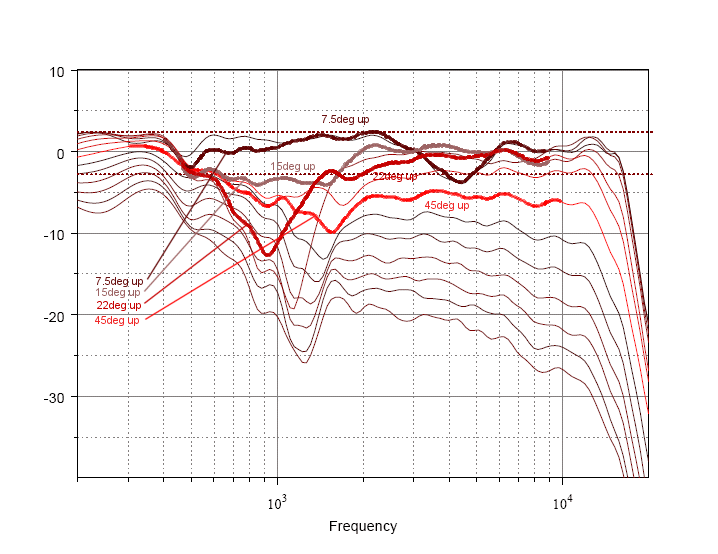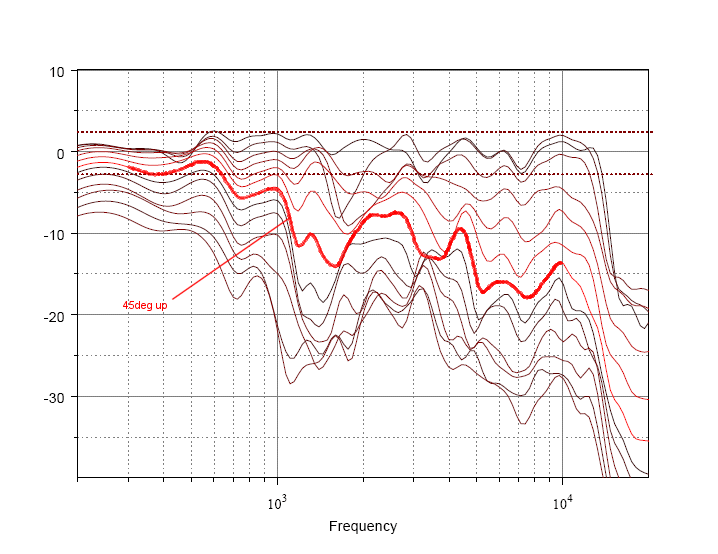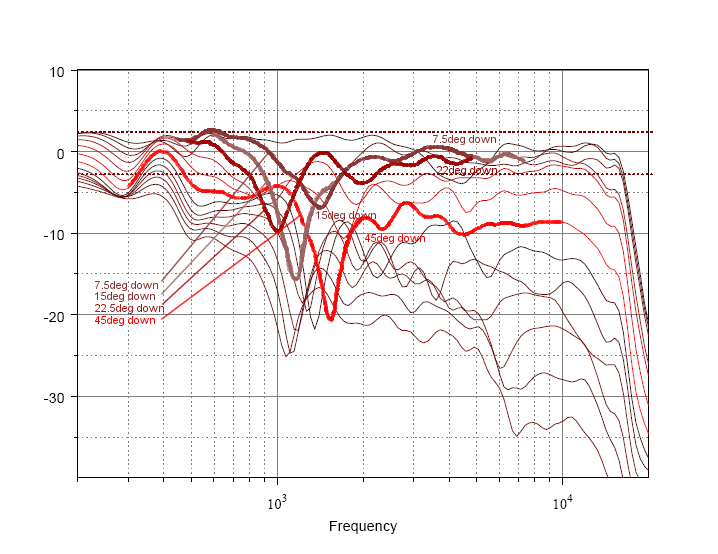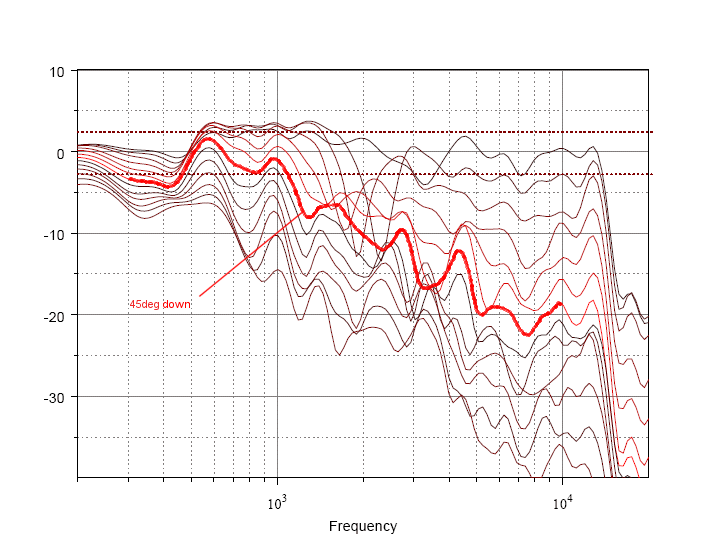

Posted by Wayne Parham [ 64.149.49.21 ] on August 06, 2008 at 14:49:19:
In Reply to: Matching directivity in the vertical and the horizontal planes posted by Wayne Parham on July 08, 2008 at 18:52:13:
Below are vertical off-axis charts of two similar loudspeakers, one with an asymmetrical 90°x40° CD horn and another with an axisymmetrical round 90° CD horn. Both are matched in the horizontal plane so that horizontal directivity is approximately equal at the crossover point.
The speaker with the 90°x40° horn does not have particularly impressive on-axis response, so it may not be the best example. The measurements were done by the person selling the speaker with the round horn, so it is understandable that he would choose a speaker that is an easy target for a favorable comparison. But disregarding the ripples in response, you can still see a trend. The lack of HF output at large vertical angles and the relation to amplitude in the crossover region is what I'm focused on. You can clearly see the difference, and these measurements demonstrate the off-axis response I chacterized with illustrations in the last post.
 90° round horn up |  90°x40° horn up |
 90° round horn down |  90°x40° horn down |
The trend is clear. At large vertical angles, both have a dip in response in the crossover region due to anti-phase nulls. Above the crossover frequency, the round horn response rises but the horn with narrow vertical coverage does not. The horn with smaller vertical pattern has less output at HF, and in this case at the edge of the +/-20° pattern it is roughly equal to the amplitude of the nulls. This is good coverage because we don't want or need HF at high vertical angles so the asymmetrical pattern is desirable.
As an example, pay attention to the 45° curve. At this angle, the speaker with the round horn is still in the pattern but the one with the asymmetrical horn is outside the pattern. So the speaker with the round horn has strong HF output at wide vertical angles but the asymmetrical horn does not.
Another thing that poses a problem is the vertical distance between sound sources. A round horn requires more vertical distance, making the null angle smaller. Here a trade-off is in order, because a larger mouth improves pattern control but it also requires more distance between sound sources stacked vertically on a baffle. It doesn't make sense to use a horn with good pattern control only to have nulls form within the pattern, so a useful tradeoff is to make the vertical dimension smaller to limit the vertical distance between sound sources.
If the null angles are spaced so they approximately equal the vertical pattern at HF, the nulls serve to marke the edge of the useful pattern. Beyond this, sound falls off. There is little treble outside the null angle. However, if a round horn is used with tall vertical coverage angle, then the nulls are in the middle of the pattern. There is still strong HF energy at large vertical angles but there is an anomaly in the crossover region. This is undesirable, as there is little need for sound at these large vertical angles.
[ PiSpeakers Forum ] [ Help ]